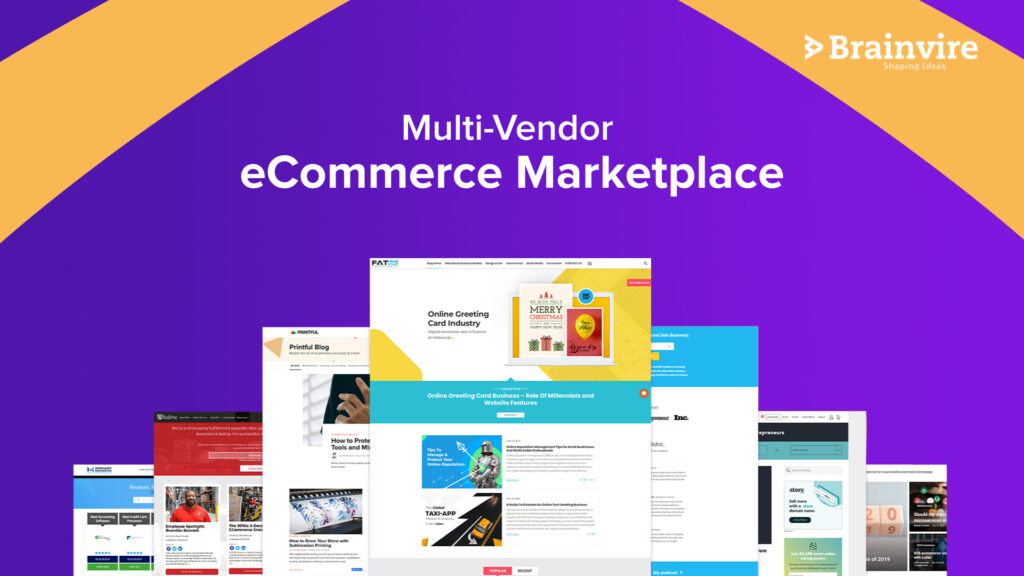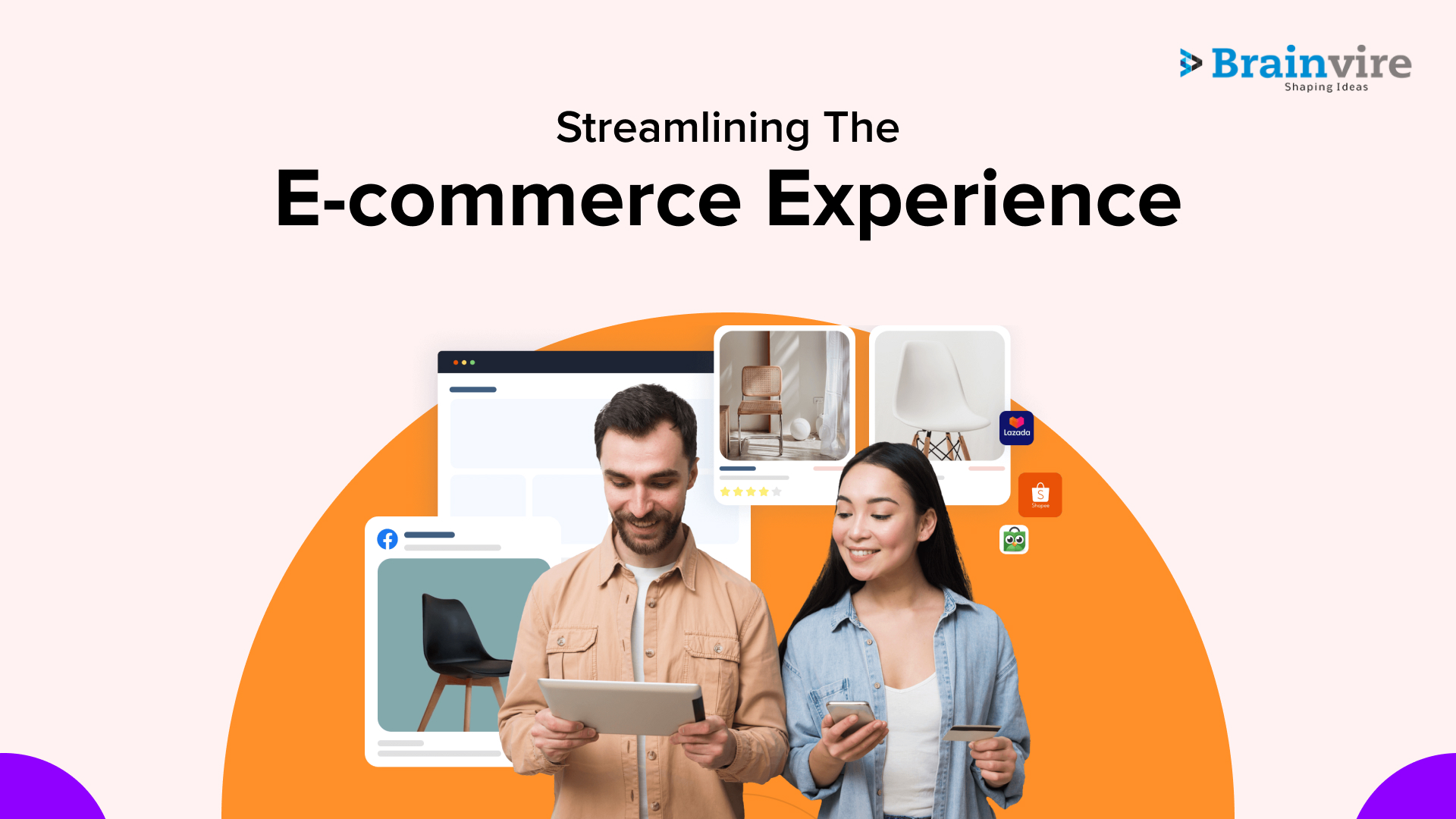In today’s digital era, eCommerce has emerged as the favored method of shopping for consumers globally. To cater to this growing demand, numerous eCommerce development companies in the USA are working on innovative solutions. Among them is Adobe Marketplace, a platform specifically designed for a Personalized Multi-Vendor eCommerce Marketplace. It enables enterprises to create a customized e-commerce platform tailored to their specific requirements.
Ecommerce development is essential for the success of a multi-vendor ecommerce marketplace. This type of platform offers numerous advantages, such as a wider range of products, cost savings on overhead expenses, and an enhanced consumer experience. In this article, we will explore different business models suitable for multi-vendor ecommerce marketplaces and provide valuable insights into effective marketing strategies that can drive growth and ensure success.
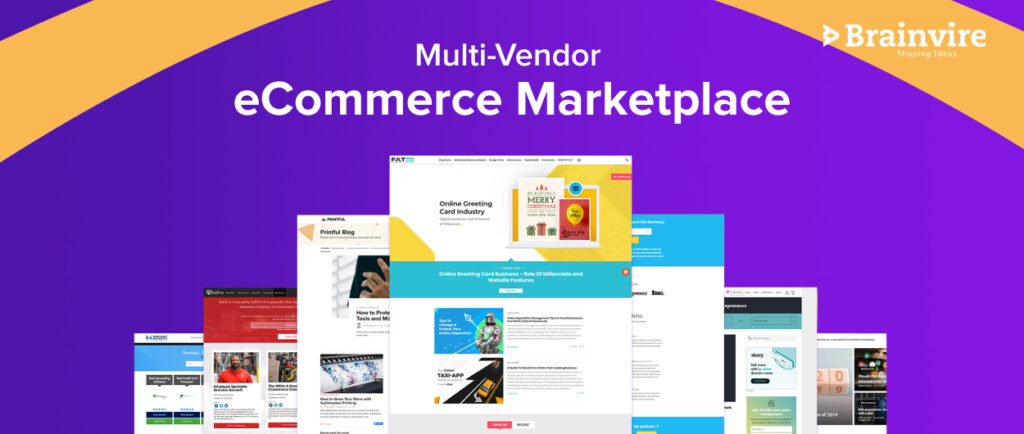
Benefits of Personalization in Multi-Vendor Ecommerce Marketplaces
In today’s fast-paced, always-connected world, customers expect services that are tailored specifically to them. The ability to tailor an online shopping experience to each individual customer is becoming increasingly important as a competitive differentiation.
Personalization is very useful for multi-vendor ecommerce marketplaces. It can boost consumer engagement and loyalty, enhance the customer experience, increase sales and revenue, and give the marketplace a competitive edge.
Increased Customer Engagement and Loyalty:
With personalization, businesses may give customers a more interesting and unique purchasing experience. Businesses can better serve their customers by responding to their specific needs by using the information they obtain about their tastes and buying habits.
This may be tailored suggestions based on the customer’s past purchases, web surfing habits, and other profile data.
Customers are more inclined to participate in the market and develop brand loyalty if they believe their buying experience is customized to their needs and interests.
Epsilon found that if a company can provide a tailored experience for each consumer, that number jumps to 80%. Personalization can also improve customer retention since satisfied consumers are less likely to look elsewhere.
Improved Customer Experience:

An enhanced customer experience is another potential outcome of personalization. Businesses can attract customers and retain their loyalty by providing a more personalized shopping experience.
Customers can be offered suggestions according to their tastes or interests, for instance, or pointed toward things that have already been purchased. Customers may be more satisfied because they won’t have to spend as much time searching for what they need.
In addition, customization might assist in lessening the possibility of shoppers being annoyed or confused. Businesses can lessen the chances of customers encountering irrelevant or unpleasant products by, for instance, showcasing products that are relevant to the customer’s interests. Customers may find their time spent shopping less taxing and more relaxing as a result.
Increased Sales and Revenue:

The opportunity to boost sales and revenue is a major perk of personalization in multi-vendor online marketplaces. Businesses can improve conversion rates by increasing client satisfaction with individualized shopping experiences.
A study by Monetate found that offering customers recommendations based on their individual preferences can boost sales by as much as 300%.
A higher average order value can be achieved through personalization as well. Businesses can increase their sales by showcasing additional products to customers if they are either in line with the customer’s interests or are complimentary to ones they have already purchased. The company’s income and profits could rise as a result.
Competitive Advantage:

A competitive edge for firms can also be gained through personalization in the cutthroat environment of the ecommerce sector. Offering a one-of-a-kind and interesting shopping experience is the most effective strategy for businesses looking to differentiate themselves from the competition and attract new customers.
Consumers are more likely to return to a store that meets their requirements and gives them a positive purchasing experience if it uses personalization strategies.
In addition, businesses can better anticipate customer demands and trends with personalization assistance. By acquiring consumer data and its subsequent analysis, companies can provide superior service to their clients by accurately predicting their requirements and satisfying their desires.
This can help preserve the continued sustainability of the market and the appeal it has among customers.
Personalization Strategies For Multi-Vendor E-commerce Marketplaces
Multi-vendor online marketplaces are not immune to the importance of personalization, which has spread throughout the ecommerce industry.
Multi-vendor ecommerce marketplaces need to establish strong personalization methods that can give a tailored experience to customers if they are to compete in today’s congested digital scene. Here are some of the best personalization strategies for online marketplaces with several sellers.
Personalized Product Recommendations:
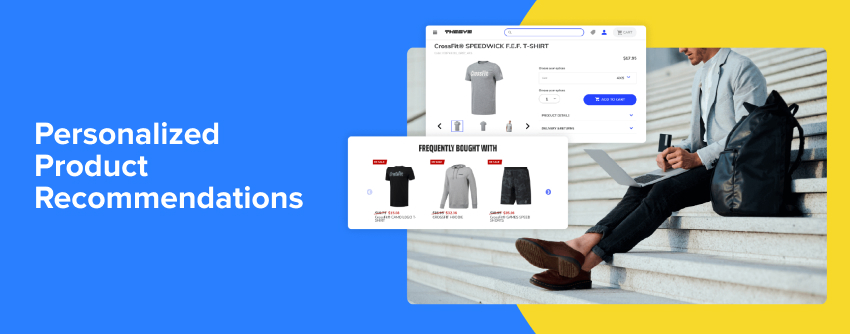
Personalized product recommendations are among the most successful personalization tactics for multi-vendor e-commerce marketplaces. Markets can cater to customers’ unique tastes and interests by evaluating their data and actions to make product recommendations.
Personalized product suggestions can be achieved using several methods, such as collaborative, content-based, and hybrid filtering.
Collaborative filtering looks at how similar customers act and then makes suggestions to them. Product qualities are analyzed via content-based filtering, and related products are recommended. Hybrid filtering integrates both methods to generate suggestions depending on user actions and product characteristics.
Companies like Amazon use collaborative filtering to give customers tailored product suggestions. Amazon can provide a more tailored and satisfying shopping experience for each individual by evaluating their browsing and purchasing habits to make product recommendations.
Customized Marketing Campaigns:
Customized marketing campaigns are another powerful method of personalization for multi-vendor online marketplaces. Markets may improve the shopping experience and boost conversion rates by personalizing their marketing strategies to each customer’s unique wants and demands.
Email marketing, social media marketing, and targeted advertising are a few methods that may be used to create effective, individualized marketing initiatives. Sending customers customized emails based on their actions and preferences is a key strategy in email marketing.

Social media marketing entails tailoring one’s online content and promotions to the preferences and habits of one’s target audience. Advertisements can target specific customers or demographic groups based on their past actions and demonstrated interests.
Etsy is a good example of a company that uses email marketing to send tailored discounts and specials to its clientele. Etsy may increase the likelihood of a purchase by email by sending each consumer a customized message based on their past actions and profile information.
Tailored Customer Service:
Another successful method of customization for multi-vendor online marketplaces is individualized customer care. Marketplaces can improve their customers’ overall buying experience by tailoring their service to each individual’s needs.
Personalizing product information, product recommendations, and even customer service interactions are all ways to provide superior service to each individual consumer. We tailor assistance to meet customers’ specific needs and preferences.
Giving customers suggestions for products they would like based on their unique tastes and interests is an example of customized product recommendations. Providing clients with specific product details tailored to their preferences and past purchases is a key component of personalized product information.
As an illustration, Zappos, an online multi-vendor marketplace for apparel and footwear, offers tailored customer service. Zappos can cater to its customers’ needs by compiling and analyzing information about their purchases and browsing habits.
Personalized User Interfaces:
Individualized user interfaces are a powerful customization form for marketplaces that host multiple vendors. Marketplaces may make buying more interesting and fun for customers by letting them customize their interfaces.
Various techniques to tailor user interfaces include personalized search results, customized product listings, and customized product pages. By considering each user’s past actions and current areas of interest, personalized search engines return more relevant and engaging results.
Offering product catalogs that are customized for each customer takes into account their specific needs and interests. Customized product pages offer thorough and individualized product information that is relevant and entertaining to consumers.
For example, Wayfair gives its customers tailored search results and product listings. Wayfair’s ability to tailor the shopping experience to each customer is made possible by analyzing their demographic and purchase history data.
Implementing Personalization in Multi-Vendor E-commerce Marketplaces
Personalization is an essential component of a successful multi-vendor e-commerce platform. Marketplaces may boost consumer engagement and loyalty, improve the customer experience, and ultimately generate sales and income by offering a personalized purchasing experience to customers.
Yet, integrating personalization in a multi-vendor e-commerce marketplace can be a difficult task. Following are some of the major phases in establishing personalization in a multi-vendor e-commerce marketplace:
Analyzing Customer Data:
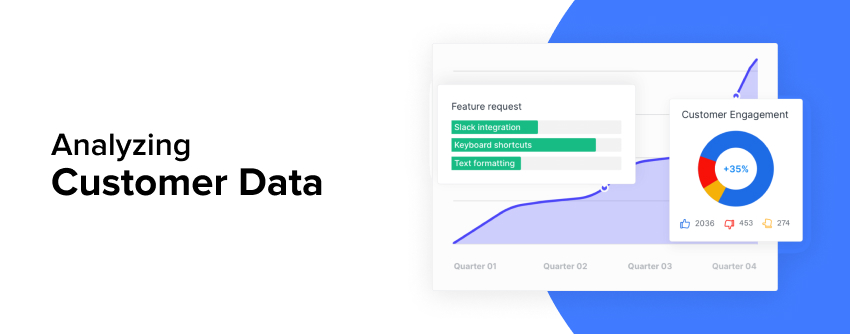
Personalization in multi-vendor online marketplaces starts with evaluating client data. By collecting and analyzing consumer data, markets may learn a lot about their customers’ habits, tastes, and interests. With this information, businesses may give their clients individualized product suggestions, marketing strategies, support options, and user interfaces.
Website analytics, client surveys, and social media listening are just a few options for gathering customer information. Useful insights into your customers’ platform activity, such as which sites they visit, which goods they view, and how long they spend on each page, can be gleaned through website analytics tools like Google Analytics.
Listening to conversations about your business and products on social media and conducting customer surveys can help you better serve your clientele.
You might use the information you’ve gathered to understand your customers better to construct customer personas. Use customer personas to steer your personalization strategy by better understanding your consumers’ wants, dislikes, and pain areas.
Choosing Personalization Tools And Software:
Choosing the correct customization tools and software is the next stage in rolling out personalization in multi-vendor ecommerce marketplaces. It isn’t easy to pick the best customizing tool or piece of software among the many out there.
When settling on the best personalization tools and software, your business’s requirements, available funds, and technical savvy are all factors to consider.
Consider the complexity of setup, vendor support and training options, as well as the features and capabilities of different customization apps and programs. Some are user-friendly, while others require more technical expertise.
Adobe Target, Optimizely, and Dynamic Yield are well-liked personalization tools and software for multi-vendor e-commerce marketplaces. Modify product suggestions, marketing strategies, customer service, and user interfaces with the assistance of these programs and applications. Leveraging AEM development services can further enhance personalization efforts by ensuring seamless integration and optimized user experiences across digital platforms.
Integrating Personalization Features into Your Platform:
Integrating personalization capabilities into your platform is the third stage in implementing personalization in multi-vendor e-commerce marketplaces. This entails modifying your site so each buyer has a unique buying experience.
Working with a seasoned development team is vital when integrating personalization capabilities into your platform. Leverage your development team to customize the user experience, marketing efforts, and support services.
Add personalization features to a platform through various methods, such as utilizing dedicated tools. An software, modifying the platform’s source code, or installing external plugins and extensions.
Testing And Refining Your Personalization Strategy:
You must test and fine-tune your customization approach before launching it in a multi-vendor e-commerce marketplace. If you want your personalization strategy to be successful and useful to your customers. You can’t afford to install it once and assume it’s working as intended.
Measuring and assessing the results of your personalization efforts is an important part of testing and honing your approach. Website analytics tools like Google Analytics assist in gaining insights into customer behavior and assessing the effectiveness of personalization features.
Feedback from clients is also crucial for honing your personalization tactics. If you ask for and listen to customer feedback, you can figure out what’s working and what isn’t. Customer surveys, product evaluations, and social media monitoring are all great ways to get their input.
A/B testing is a great way to try different variations of your customization strategy. The goal of A/B testing is to compare the relative success of two different iterations of a web page or service. To see which product suggestion system results in more clicks and purchases, you can, for instance, do a split test.
Once you know where to boost your personalization strategy, you may keep testing and tweaking until you reach your goals.
Challenges And Considerations
Data is crucial for organizations to make decisions and fuel growth in today’s modern environment. The advent of AI and ML has enabled businesses to use this information to provide customers with tailored services. Businesses face numerous obstacles and considerations when deploying such technology successfully.
Here are the four key challenges and considerations when implementing data-driven personalization: data privacy concerns, balancing personalization with user control, managing vendor relationships, and maintaining scalability and efficiency.
Data Privacy Concerns:
Personal information protection and ethical use are becoming increasingly important as businesses collect more customer data. Privacy concerns arise when companies gather, use, disclose, or sell users’ personal information without their knowledge or consent.
Data breaches can expose sensitive personal details like credit card numbers, social security numbers, and medical records.
Organizations must adopt transparent rules and procedures for data collection, storage, and use to solve these issues. This includes taking precautions to prevent unauthorized access to data and storing and transmitting it securely.
Businesses must adhere to data privacy laws, such as the EU’s General Data Protection Regulation (GDPR) or the US’s California Consumer Privacy Act (CCPA).
Balancing Personalization With User Control:
Although it can increase user engagement and satisfaction, poorly managed personalization might appear creepy or intrusive.
Customers desire a sense of control over the usage of their personal information and their interactions with a company. Hence, businesses must balance personalization and user control, allowing customers to not participate in specific experiences or manage the information collected about them.
To accomplish this, empower consumers with user-friendly controls for managing their personal information and settings. Users should have simple options for controlling their information, such as removing themselves from mailing lists or erasing all of their data.
Furthermore, businesses can be forthright about the data they gather and the purposes for which they use it, arming customers with the knowledge they need to make educated decisions about their data.
Managing Vendor Relationships:
Implementing data-driven personalization often involves collaborating with third-party vendors, such as data management platforms, analytics providers, or advertising networks.
These connections may result in substantial data access, technological knowledge, and scalability benefits. But, they can also present problems regarding compliance requirements, data privacy, and data security.
To effectively mitigate these dangers, businesses need to conduct thorough due diligence on potential vendors and choose those with a proven track record of protecting customer information.
Also, organizations should make crystal clear contractual agreements with their vendors that describe the vendor’s responsibilities regarding data management, compliance, and security. Regularly monitor and audit vendors’ performance to ensure they fulfill their responsibilities.
Maintaining Scalability And Efficiency:
The implementation of data-driven personalization can require a substantial amount of resources, including major investments in technology, infrastructure, and manpower.
Maintain scalability and efficiency to deliver personalized experiences in a timely and cost-effective manner. As the volume of data and complexity of personalization algorithms increase, it becomes crucial to adapt accordingly.
Investing in cloud-based technologies that offer elastic scaling capabilities can help businesses achieve scalability and efficiency. These technologies allow businesses to adjust their resource allocation to fluctuating demand levels.
In addition, businesses may use automation and machine learning to improve customization algorithms and reduce the amount of work that requires human participation.
To Sum Up
In a multi-vendor online marketplace, the customer experience can be greatly enhanced by personalization. Increasing customer involvement, sales, and loyalty can be achieved through individualized shopping experiences.
Apply customization through artificial intelligence-powered recommendation engines, customized discounts and deals, and filtered search results, among other methods.
Continuously monitor and optimize personalization tactics to maximize their effectiveness while striking a balance between customization and privacy concerns. Customers are more likely to return if they have a pleasant and stress-free time while making purchases.
FAQs
The term “personalization” describes the use of data and technology for each customer’s unique shopping experience in a multi-vendor online marketplace. Tailoring product suggestions, search results, and advertising messages to individuals’ interests and preferences is possible.
Personalization enhances the customer experience, boosts customer loyalty, and increases sales in a multi-vendor e-commerce marketplace. By providing personalized suggestions and content tailored to their interests, customers are more likely to make purchases and return for future transactions.
Collecting data on customer behavior and preferences, applying algorithms to analyze the data and provide tailored recommendations, and segmenting customers to adapt marketing messages and promotions are all ways to implement personalization in a multi-vendor e-commerce marketplace.
By being open and honest about data collection and use, by providing customers agency over their data, and by adhering to data privacy standards, a multi-vendor e-commerce marketplace may guarantee that personalization does not violate user privacy.
Data anonymization and encryption are two additional tools available to safeguard client information.
Monitoring key performance indicators (KPIs) such as conversion rates, consumer engagement, and customer retention enables the assessment of personalization success in a multi-vendor e-commerce marketplace. Additionally, gathering client input through surveys and focus groups helps identify the most effective experiences.
Related Articles
-
The Best eCommerce Security Tips And Practices In 2023
The security of their user’s data has to be the most crucial aspect of running the business for an eCommerce business owner. Besides, why not? Attack patterns over the past
-
From Cart Abandonment To Slow Load Times: Streamlining The E-commerce Experience
The success of any eCommerce solution company depends on streamlining the ecommerce experience through a well-designed and user-friendly website in today’s competitive market. Various factors, including Cart Abandonment Solutions, Mobile
-
How Big Is Amazon? Your Guide to Understanding Amazon Business Model
Amazon, one of the most highly used eCommerce company is continuously growing, all thanks to more and more consumers who are now choosing to turn toward the internet for purchasing

